Last summer, we stopped to camp in a state park just north of the Blue Ridge Mountains. It had been a long day’s drive, so we were ready to stretch our legs and see a bit of the natural world in an ecoregion different from our own. In one way, though, we felt right at home. As we strolled through the campground we spotted a multitude of Japanese barberries. In our suburb, they’re planted intentionally. Here, they marked an unintentional, but continuing invasion of our natural areas.
Japanese barberry (Berberis thunbergii), an Asian native, was introduced to the United States in the late 1800s as an ornamental shrub and successor to the less ornamental common barberry (B. vulgaris), which had also been introduced from Europe by early settlers. (A native barberry [B. canadensis] grows in the eastern and southeastern U.S. but is not abundant.) In addition to spreading by creeping roots, birds and other wildlife eat the berries and disperse the seeds in their droppings. Japanese barberry now forms dense stands in a variety of habitats, including forests and woodlands, wetlands, pastures and meadows, and wastelands. It is especially common in New England, but it extends westward to Wyoming, south to Georgia, and north to Quebec.

Japanese Barberry(Berberis thunbergii)
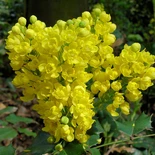
Common Barberry(Berberis vulgaris)
It displaces native plants, reducing wildlife habitat and forage, and its prickly stems impede the movement of wildlife. It can alter soil characteristics, such as pH, and can reduce the depth of the litter layer in forests.
Despite its negative impact, Japanese barberry is a popular – and lucrative – landscaping plant. Annual sales of the shrub are estimated to be $15 to $20 million in Connecticut alone. And the reasons for its popularity are often the same reasons it’s problematic in natural areas. It thrives in a variety of soil and moisture conditions, it can grow in shade (like the forested areas in our campground), and it’s deer-resistant – giving it a decided advantage over native species.
Ads promote Japanese barberry as “…everywhere respected as a dependable, versatile shrub” and “…known for producing excellent hedges.” Some ads claim that “…these attractive berries last all winter long, sustaining birds and other wildlife,” but in reality, barberries are a last resort food and a poor substitute for the native plants they displace.
It’s perhaps understandable that businesses would promote such a profitable plant, but it’s perplexing why other institutions do. On a visit to a botanical garden in Pennsylvania, I was astounded to see it included in the home landscape demonstration garden. But it’s especially ironic to see extension services suggesting this plant for home landscaping, even while the same states’ departments of natural resources list it as an invasive plant. For example, the University of Illinois Extension includes barberry in its “Selecting Shrubs for Your Home” web site, and the Virginia Cooperative Extension suggests that since it tolerates severe pruning, it’s “one of the better plants to use as a dense hedge.”
As always, it’s recommended that you don’t plant invasive plants like barberry, but if you already have one, there are a number of ways to get rid of it. Since I had only three small barberries (yes, in my pre-Wild Ones days, like everyone else in my neighborhood, I had some, too) I just dug them up, being careful to get all the roots. Wear thick gloves. Ten years later, I still remember how viciously thorny they were. Alternative methods are to use shrub removal tools, or to repeatedly cut them down. If necessary, use a systemic herbicide.
But other “solutions” are in the works. Some researchers are developing a seedless form of the plant, while others are searching for cultivars that aren’t invasive. Planting sterile barberries is surely better than planting fertile ones, but is “less bad” good? As Douglas Tallamy points out in Bringing Nature Home, the plants we use in our gardens will determine what nature will look like in the future – and he stresses that native plants are essential for preserving biodiversity. As any Wild One knows, the best solution to invasive plants like Japanese barberry is planting native plants.
Native Alternatives to Japanese Barberry
Check to see which of the following are native to your area.
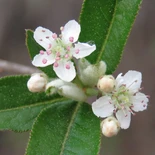
Red Chokeberry(Aronia arbutifolia)

Black Chokeberry(Aronia melanocarpa)

American Beautyberry(Callicarpa americana)
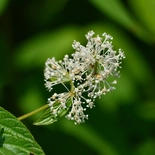
New Jersey Tea(Ceanothus americanus)

Coastal Sweetpepperbush(Clethra alnifolia)

Silky Dogwood(Cornus amomum)

Bursting-Heart(Euonymus americanus)

Wild Hydrangea(Hydrangea arborescens)
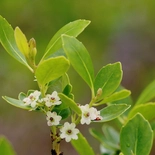
Inkberry(Ilex glabra)
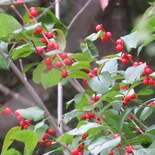
Common Winterberry(Ilex verticillata)
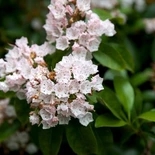
Mountain Laurel(Kalmia latifolia)
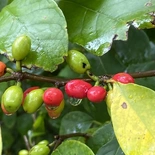
Northern Spicebush(Lindera benzoin)

Common Ninebark(Physocarpus opulifolius)
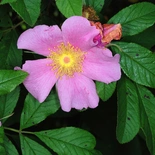
Swamp Rose(Rosa palustris)

Carolina Rose(Rosa carolina)

Highbush Blueberry(Vaccinium corymbosum)
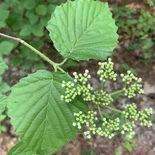
Southern Arrowwood(Viburnum dentatum)
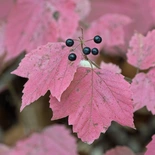
Mapleleaf Viburnum(Viburnum acerifolium)


